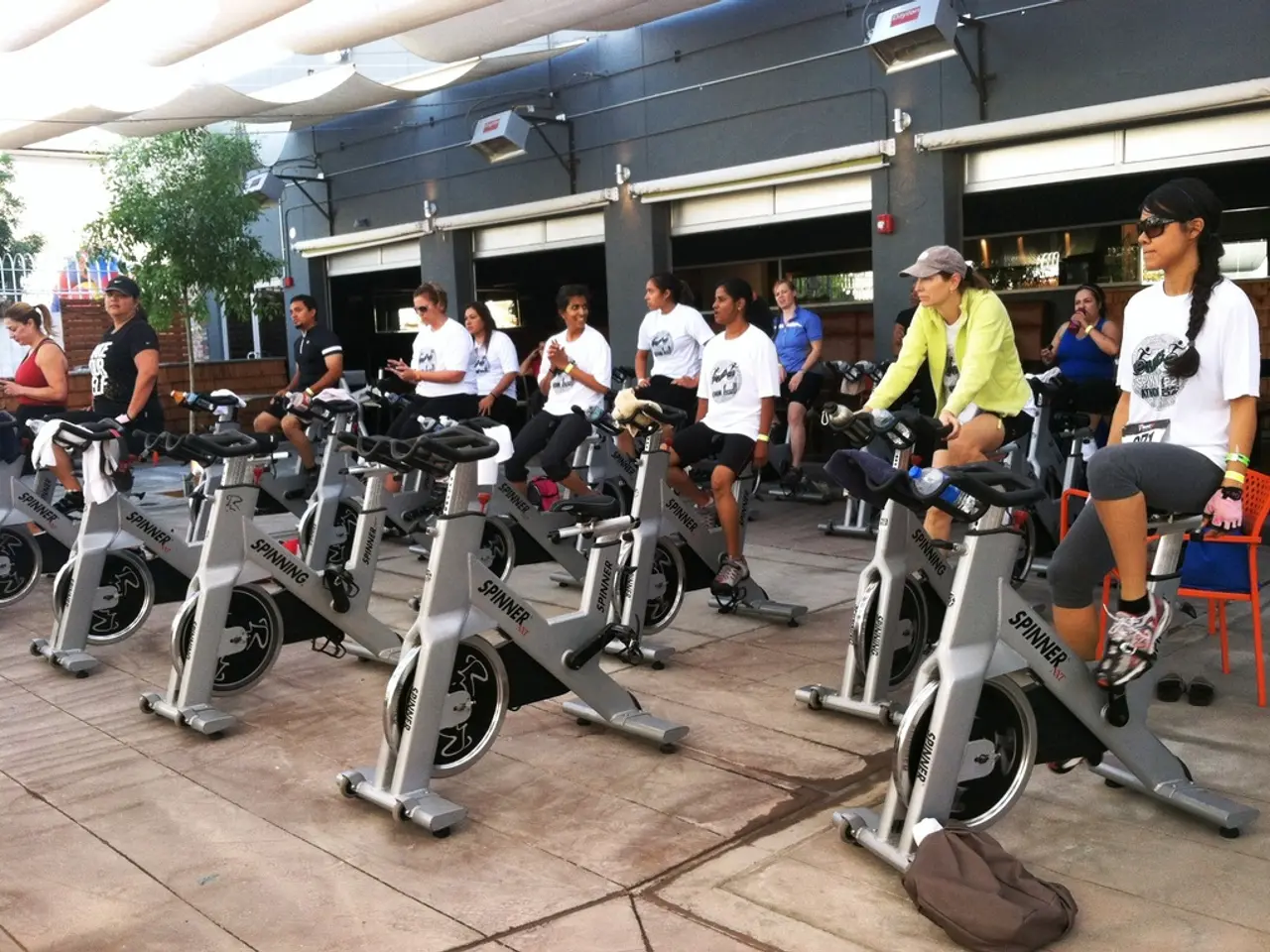Future Health Trends Unveiled: Forecasting Fitness Fads Due in 2026
In the year 2026, the health and fitness landscape is set to undergo a significant transformation, as advancements in technology, shifting consumer preferences, and a broader definition of wellness converge to reshape the industry. Here are some key trends expected to shape the fitness world in the coming years:
**1. Personalized Fitness and Nutrition Plans** With the rise of AI, AR, and data analytics, fitness and wellness apps will tailor programs to individual needs and goals, enhancing engagement and effectiveness. This personalization will be further bolstered by new startups and digital health players expanding consumer choice and innovation.
**2. Mental Fitness at the Forefront** Recognising the importance of brain health, stress management, and emotional balance as key aspects of overall fitness, mental health and cognitive wellness will gain prominence. This shift includes the use of neurofeedback wearables, digital psychedelics, and mind gyms for mental workouts.
**3. Recovery and Regeneration** The sector will prioritise recovery-focused offerings, such as advanced therapies and technologies that help the body recuperate more efficiently post-exercise or injury. This trend aligns with growing consumer awareness of the importance of rest and regeneration for long-term health.
**4. Fusion with the Metaverse and Virtual Health** The integration of virtual health technologies—including virtual reality (VR), augmented reality (AR), and telehealth—will transform how fitness and wellness services are delivered. Virtual fitness platforms and remote healthcare consultations will become widespread, improving accessibility, convenience, and immersive exercise experiences.
**5. Sustainability** Sustainability will be a critical factor, with consumers favouring eco-friendly fitness products, sustainable gym operations, and wellness tourism that respects environmental limits. Brands that align with sustainability values will gain competitive advantage as demand for responsible health options grows.
**6. Community-Led Fitness** Community and social engagement will be integral. Fitness concepts emphasising group training, social connection, and shared goals—such as those offered by UFC GYM and boutique studios—will thrive, helping participants maintain motivation and improve adherence.
**7. Longevity and Anti-Aging Focus** Interest in longevity—extending healthspan and lifespan through fitness, nutrition, and wellness practices—will shape product and service development. Wellness programs will increasingly incorporate scientific insights related to aging processes and preventive care.
In addition to these trends, 2026 will see the rise of metaverse wellness retreats offering virtual environments for yoga, meditation, and sound healing. Plant-based nutrition will continue to grow in popularity, and sustainable activewear made from biodegradable or recycled materials will dominate fitness fashion.
Recovery will become a central focus in training programs, with practices like sleep optimization, cryotherapy, red light therapy, lymphatic drainage, and active recovery workouts gaining prominence. At-home lab testing will become routine, helping users monitor hormones, vitamin levels, sleep patterns, and inflammation markers.
Peer-led wellness groups, both online and offline, will provide accountability, education, and emotional support. Biological age tracking through blood tests and wearables will replace chronological age as a marker of health. Fitness experiences will blend digital worlds with physical effort in the metaverse, with virtual group classes, haptic wearables, and immersive fitness games becoming popular.
As we move towards the Wellness Revolution of 2026, it's clear that the industry is shifting towards highly personalized, technology-enabled, and holistic wellness experiences that integrate physical, mental, and social health aspects while emphasising sustainability and longevity. Virtual health and metaverse fusion will notably expand accessibility and engagement, and community-based fitness will remain a powerful driver of consumer loyalty and success.
- The shift towards personalized fitness and nutrition plans will continue to advance with the aid of AI, AR, and data analytics, providing tailored programs to individuals, enhancing engagement and effectiveness.
- Recognizing mental health as a fundamental aspect of overall fitness, mental health and cognitive wellness will be prominent, leveraging neurofeedback wearables, digital psychedelics, and mind gyms for mental workouts.
- Sustainability will be paramount in the fitness industry, with consumers favoring eco-friendly fitness products, sustainable gym operations, and wellness tourism that respects environmental limits.
- Consumer preferences for community-led fitness will drive the growth of fitness concepts emphasizing group training, social connection, and shared goals, such as those offered by UFC GYM and boutique studios.
- As part of the focus on longevity, wellness programs will integrate scientific insights related to aging processes and preventive care to extend healthspan and lifespan.
- Plant-based nutrition will remain popular, and sustainable activewear made from biodegradable or recycled materials will dominate fitness fashion.
- Recovery-focused offerings, such as sleep optimization, cryotherapy, red light therapy, lymphatic drainage, and active recovery workouts will gain prominence in training programs.
- At-home lab testing will become routine, allowing users to monitor hormones, vitamin levels, sleep patterns, and inflammation markers.
- Peer-led wellness groups, both online and offline, will offer accountability, education, and emotional support, while biological age tracking will replace chronological age as a marker of health, and fitness experiences will blend digital worlds with physical effort in the metaverse.




